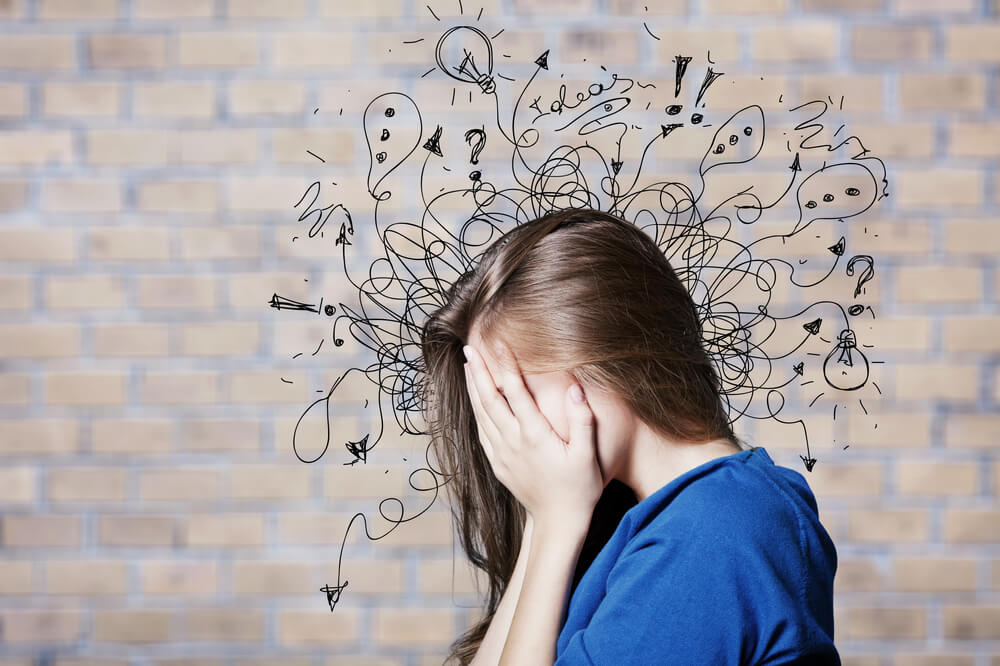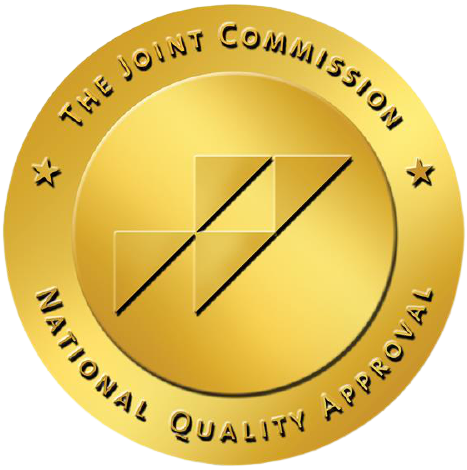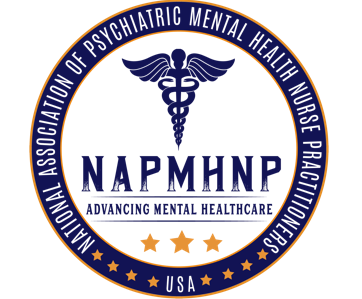Anxiety disorders are the most common mental health issues in the United States. According to the National Institute of Mental Health, anxiety disorders affect 40 million adults in the US age 18 and older. That’s nearly 1 in 5 people! But what about anxiety disorders in children and teenagers? The numbers are just as staggering. In fact, anxiety disorders are the most common psychiatric illness among children and adolescents. Anxiety disorders are important to recognize because they can significantly impact day-to-day functioning, lead to poor school performance or difficulties with friends and families, or cause high levels of distress. If you’re a parent or caregiver of a young person who seems to be struggling with anxiety, this guide is for you. We’ll discuss some reasons why anxiety in children occurs, signs and symptoms, types of anxiety disorders, treatment options, and resources!
What is anxiety and why do children and teens experience it more often than adults?
Anxiety is a feeling of unease, such as worry or fear, that can range from mild to severe. Anxiety is a normal reaction to stress and can be beneficial in some situations. It can help you to stay alert and focused, and can motivate you to take action. However, anxiety can also become a problem if it’s excessive, persistent, and intrusive. For children and adolescents, anxiety can be particularly prevalent due to the many changes and challenges they face during this stage of life. Anxiety among kids and teens is likely due to a number of factors such as life experiences, genetics, and biological factors.
Life Experiences:
Traumatic events or experiences, such as abuse, bullying, or loss of a loved one can increase the risk of anxiety.
Genetics:
Anxiety disorders are more common in children that have parents with an anxiety disorder, suggesting a genetic component.
Biological differences:
During adolescence, an imbalance between parts of the brain (the amygdala and pre-frontal cortex) may contribute to the development of anxiety.
How can you tell if your child or teenager is experiencing anxiety, and what are the common signs and symptoms?
The signs and symptoms of anxiety in children and teenagers can be subtle and difficult for a parent or caregiver to detect. One of the best ways to detect anxiety is to maintain regular, open communication with your child. However, you might need to speak with someone who has frequent contact with your child regularly, such as a teacher, coach, friend, family member, or healthcare provider, to help you get more information. Below are common signs and symptoms of anxiety. Those with anxiety typically experience some, but not all, of these.
Symptoms of anxiety in children:
A symptom is something that is felt or experienced by the person with anxiety. These may include periods of:
- Profuse sweating
- Racing heart
- Dizziness
- Nausea or stomach pain
- Shortness of breath or hyperventilating
- Shaking or trembling
- Headaches
- Tense muscles
- Restlenessness
- Sleep problems
- Difficulty concentrating
- Racing thoughts
- Feelings of helplessness or hopelessness
- Irrational fears
Signs of anxiety in children:
A sign is a behavior or other outwardly displayed indicator that can be observed by others.
Signs of anxiety may include:
- Irritability
- Increased need for reassurance
- Unexplained fatigue
- Isolating or withdrawing
- Restlessness
- Being easily startled
- Avoiding activities or locations that trigger anxiety
- Poor school performance
- Refusing to go to school
What are the major types of anxiety disorders experienced by children and teenagers?
According to the Diagnostic and Statistical Manual of Mental Disorders, 5th Edition Text Revision (DSM-5-TR), there are 7 different types of anxiety disorders that can occur in children and teenagers. The DSM-5-TR is the main professional reference that organizes and defines mental health conditions in the United States.
General Anxiety Disorder
General anxiety disorder is a psychiatric condition that is characterized by excessive worry and anxiety about a number of different components of life. In children and adolescents, this can manifest as safety concerns, school performance anxiety, or health worries.
Social Anxiety Disorder
Social anxiety disorder is a condition where intense fear is experienced directly during social situations or when anticipating them in the future. Children and teenagers with social anxiety disorder often worry about being judged by others, or about being embarrassed socially . As a result, they may avoid social situations altogether, or they may endure them with great discomfort.
Separation Anxiety Disorder
Separation anxiety disorder is a type of anxiety disorder that is characterized by excessive fear and anxiety in response to separation from loved ones or others with whom an individual is emotionally attached. Children and teenagers with separation anxiety disorder may experience excessive worry about losing their primary caregiver or having them become injured or ill. One common issue that parents may observe when children experience separation anxiety disorder is difficulty getting a child to fall asleep by themselves and in their own room.
Agoraphobia
Agoraphobia is a type of anxiety disorder where children or adolescents experience intense fear and avoid situations where they feel they may be trapped or unable to escape. People with agoraphobia may avoid crowded places such as theaters, public transportation, or any situation where they feel they may be unable to get help if needed. Occasionally, symptoms will be experienced in wide open spaces that feel overwhelming. Children with agoraphobia may avoid situations unless a parent or caregiver is with them.
Specific Phobias
A specific phobia is an intense, irrational fear of a specific object or situation. Common specific phobias include fear of animals (such as snakes or spiders), fear of flying, and fear of heights. People with specific phobias often go to great lengths to avoid the object or situation of their fear. It’s important to remember that for a specific phobia to be diagnosed, it must result in a functional impairment. For example, a fear of water that results in a child avoiding washing their hands, bathing, or going outside when it’s raining might signal the need for professional assessment.
Panic Disorder
Panic disorder is a type of anxiety disorder characterized by sudden and recurrent episodes of intense fear that can occur unexpectedly and without warning. These panic attacks typically last for several minutes and are often accompanied by physical symptoms such as a fast heart rate, shortness of breath, and dizziness before resolving. People often feel briefly overwhelmed by the symptoms due to the sudden onset and intensity.
Selective Mutism
Selective mutism is a condition in which a person is unable to speak in certain social situations, such as school or work. Children with selective mutism may speak freely at home or with close friends, but they become mute in other settings. Selective mutism usually develops in early childhood, and it is more common in girls than boys.
What are some of the best ways to help a child or teenager cope with anxiety in everyday life situations?
Children and teenagers today face more pressure than ever before. From academic and social pressures at school to the constant stream of images and messages on social media, it’s no wonder that anxiety in children is on the rise. While it’s not possible to eliminate all sources of stress, there are a number of things that parents and caregivers can do to help children and teenagers cope with anxiety in everyday life situations. Here are some ideas:
Talk to Them
Encourage children and teenagers to identify their worries, and talk about them openly. This can help to identify and alter negative thoughts, find solutions, and model for your child or teen that it’s ok to discuss mental health issues.
Teach Relaxation Strategies
Teach children and teenagers healthy coping mechanisms, such as deep breathing or progressive muscle relaxation. When using deep breathing, have your child breathe in for 5 seconds, hold their breathe for 3 seconds, then breathe out over 5 seconds. When using progressive muscle relaxation, focus on specific muscle group, such as the hands and arms. Next, tense those muscle groups for 5 seconds and then relax those same muscles. A common example of progressive muscle relaxation is to have your child or teen pretend that they are squeezing all the juice out of a lemon. Then talk together about what you noticed as in terms of the difference between feeling tense and relaxed. Both of these techniques can help to reduce anxiety in the moment.
Encourage Regular Exercise
Regular exercise can help reduce symptoms related to depression, anxiety, and even ADHD. Regular exercise has more benefits than reducing anxiety symptoms: It also improves sleep, generally reduces stress, and improves energy. Exercise could include skating, playing sports such as basketball, walking, jogging, running, bicycling, dancing, or swimming. Children and teenagers should get 60 minutes of exercise each day, according to the Centers for Disease Control and the Department of Health and Human Services.
Enforce Good Sleep Hygiene
Children and teenagers, like adults, need regular sleep. Experts generally recommend that children ages 6-12 need 9-12 hours of sleep per night whereas teenagers need 8-10 hours of sleep per night. You can help your child or teen develop good sleep habits by having them limit the use of electronic devices at night, avoiding caffeine, creating a sleep schedule, and establishing a bedtime routine. Keeping the bedroom dark by turning off electronic devices (such as TVs) or using blackout curtains can also improve sleep hygiene.
Write in a Journal
Journaling can be a helpful tool for children and teenagers struggling with mental health issues. The act of writing can help to process and understand difficult emotions, and can provide a sense of calm and control. Journaling can also be a way to track mood changes and symptoms over time, which can be helpful information for mental health professionals. Additionally, journaling can be a form of self-care, helping children and teenagers to feel more connected to themselves and their experiences. When used in combination with other forms of treatment, journaling can be an effective way to manage mental health issues.
Are there any medications or therapies that can be helpful in treating anxiety disorders in children and teenagers?
There are a number of different treatments that can be helpful in managing anxiety in children and teenagers. The two major categories of treatment are psychotherapy and medications. Psychotherapy is generally considered to be the first-line treatment for mild to moderate anxiety disorders. Medications are usually recommended with severe anxiety disorders or when someone has a combination of an anxiety disorder with major depression (referred to as co-occurring disorders).
Psychotherapy
The main form of psychotherapy that has been shown to effective in treating anxiety in children and teenagers is cognitive behavioral therapy, or CBT. CBT focuses on helping children and teenagers to understand and change the thoughts and behaviors that are contributing to their anxiety. In CBT, children and teenagers work with a therapist, such as a counselor, social worker, or psychologist, to identify the thoughts and behaviors that are triggering their anxiety, and then they practice new ways of thinking and behaving to reduce the impact of these thought patterns. Research has shown that CBT can be an effective treatment for anxiety in children and teenagers, and it can help them to improve their symptoms and to feel better overall.
Medication
Psychiatric medication can be an important part of treatment for children and teenagers with anxiety. These medications, such as selective serotonin reuptake inhibitors (SSRIs), selective norepinephrine reuptake inhibitors (SNRIs), or tricyclic antidepressants (TCAs), can help to relieve symptoms. It is important to consult with a qualified mental health professional before starting any medication. A pediatrician, psychiatrist, psychiatric physician assistant, or psychiatric mental health nurse practitioner (PMHNP) can help to determine whether medication is appropriate and what type of medication would be most effective. In some cases, medication may not be necessary or may only be needed for a short period of time. Ultimately, the decision about whether to use medication should be made collaboratively by you, your child or teen, and your child’s mental health professional.
Psychotherapy and Medications
Both psychotherapy and medications can be used in combination, especially with severe anxiety, co-occurring anxiety and depression, or when anxiety is having a significant impact on daily functioning like inconsistent school attendance. In these situations, a therapist and psychiatry provider will often work together as a team. This could include discussing your child’s symptoms, response to treatment, and treatment goals.
Treatment Tip: If you child has both a counselor and psychiatry provider, consider discussing a release of information with both parties, so they can work together effectively.
Where can you find more information and support if you’re struggling to help your child or teen manage anxiety?
There are a number of different places you can turn to for information and support if you’re struggling to cope with your child’s anxiety disorder. Make an appointment with your pediatrician, counselor, psychiatrist, or PMHNP to discuss your concerns and get treatment recommendations. In addition, there are a number of resources to help cope with anxiety disorders including websites, hotlines, and even phone apps.
Websites:
- Child Mind Institute: https://childmind.org/topics/anxiety
- Teen Line, National: https://www.teenline.org/resources
- I Am Teen Strong, Colorado and Arizona: https://iamteenstrong.com
- Teen Lifeline, Arizona: https://teenlifeline.org
Hotlines:
- Mental health crisis or emergency: Call 988 or 911
- NAMI Helpline, National: Monday through Friday, 10 a.m. – 10 p.m., ET, call 1-800-950-6264, text “HelpLine” to 62640
- Teen Lifeline, Arizona only: 602-248-8336, hours are: Call 24/7/365Text weekdays 12-9 p.m. and weekends 3-9 p.m. Peer Counseling 3-9 p.m. daily.
Apps:
- Headspace: https://www.headspace.com/teens
- Calm: https://www.calm.com
- Three Good Things: https://oatmealapps.com/three-good-things
Anxiety conditions are real and can be debilitating to children and teenagers. There are treatments options and many resources available to those suffering from anxiety. If you think your child may be displaying signs of anxiety, reach out to their doctor or therapist. By seeking professional help, you can get the support and guidance you need to help your child cope with anxiety. Working with mental health professionals often helps to speed improvement and generally the skills learned can be applied long-term, for a lifetime of mental wellbeing.











